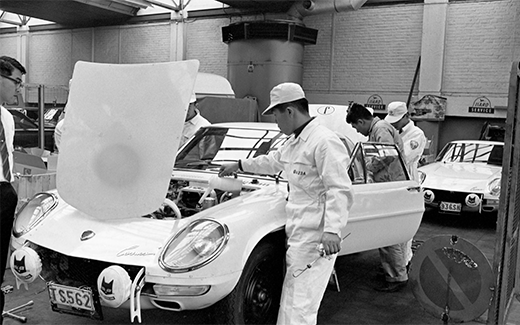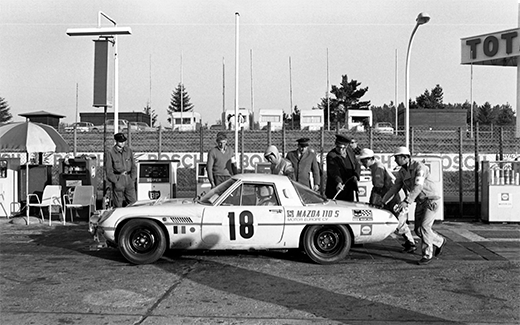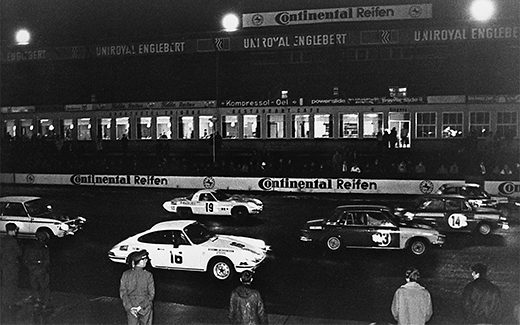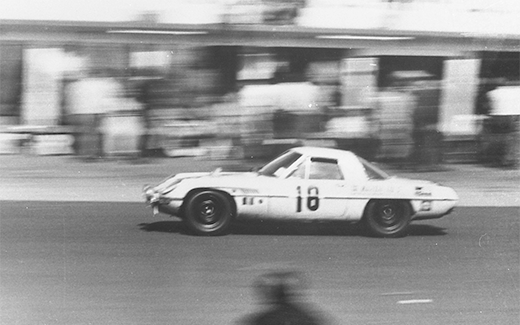In 1968, Toyo Kogyo entered its just recently completed rotary engine-powered vehicles into an endurance race reputed to be the most grueling race in the world—the Marathon de la Route 84 Hours at the Nürburgring. It was an extraordinary rally that demanded three-and-a-half days of driving around the formidable 28 km-Nürburgring technical circuit. There most definitely were less difficult options among all endurance races, such as four-hour or six-hour rallies. However, Mazda had a specific reason for why they dared to select the world’s longest 84-hour race.
Around that time in Europe, the German company NSU released the world’s first rotary engine car onto the market ahead of other manufacturers. Although the rotary engine was touted as a futuristic engine, it was not received in the market as well as expected. Since it was a new mechanism engine, the general public was still skeptical of both its reliability and durability. As the first automaker in the world to use a two-rotor rotary engine in one of its vehicles, Toyo Kogyo could not ignore the apprehension and mistrust regarding rotary engine technology. After the many hurdles that were overcome in its making, the company took great pride in the rotary engine, and wanted to erase all skepticism and bad repute surrounding it. Therefore, Toyo Kogyo intentionally decided to enter the extremely tough 84-hour Marathon de la Route endurance race. In addition, since the international race had a much higher profile than any race held in Japan, if Toyo Kogyo could achieve a good result at the race against some of the world’s most well-established rivals, it would reflect tremendously well on the rotary engine. However, this also meant that if unsuccessful in the race, it would undermine the engine’s image. Despite this risk, the Toyo Kogyo team had no hesitation taking on the challenge, even with their pride at stake, and kept high spirits with many declaring “Let’s show the world that rotary engines can really pack a punch!.”
However, it was not just the first time for Toyo Kogyo to enter its rotary engine vehicles in a race, it was also the first time for the company to enter a full-scale endurance race and to participate in a race in Europe, the home of motor racing. Throughout the year leading up to the Marathon de la Route, Toyo Kogyo developed a high-powered engine for racing and carried out bench tests for performance and detailed simulations. Cosmo Sports models (known as the 110S outside Japan) specifically built for racing underwent many durability tests at the Miyoshi Proving Ground. The team made steady progress in preparation for their first 84-hour race through persistent trial and error.
Finally, came the day of the race. Local spectators directed curious looks toward the obscure manufacturer coming from the other side of the world with cars fitted with engines of unknown ability However, after the race began, their perception of the vehicles was completely changed. Despite all concerns, the two Cosmo Sports raced their way around the difficult German course, all while letting out a unique noise specific to the rotary engine. Among a total of 59 participating vehicles, both cars delivered a solid performance, entering the top 10 from midway through the race. Regrettably, after 82 hours, just inches away from the end of the race, one of the Cosmo Sports slid off the track due to problems with one of its rear tires. The remaining Cosmo Sport on the other hand successfully completed the full distance, finishing in fourth place overall, following Porsche and Lancia.
The distinguished machine ran the full distance — more than 9,700 km over three-and-a-half days — without its rotary engine losing any performance throughout the whole race. This splendid achievement strongly impressed people all around the world, validating the engine’s reliability and endurance. In this manner, Toyo Kogyo was hugely successful in risking its pride in the rotary engine to take on one of the toughest endurance races in the whole world.




Treasured footage from the 1968 Marathon de la Route 84-hour endurance race
Footage without audio